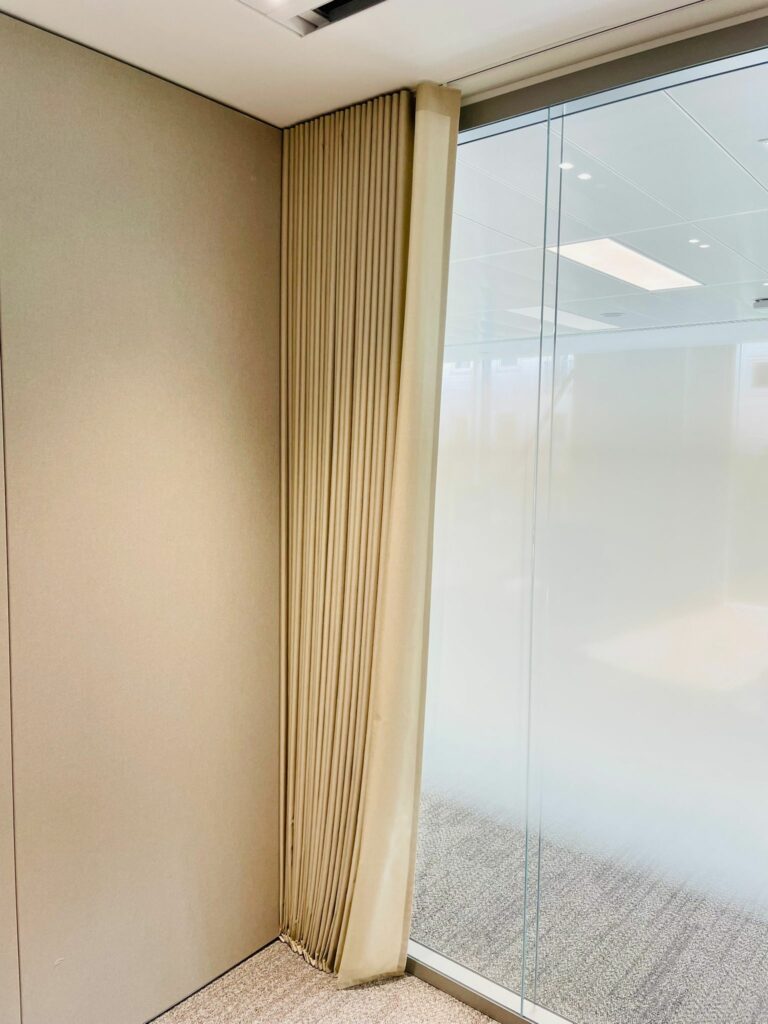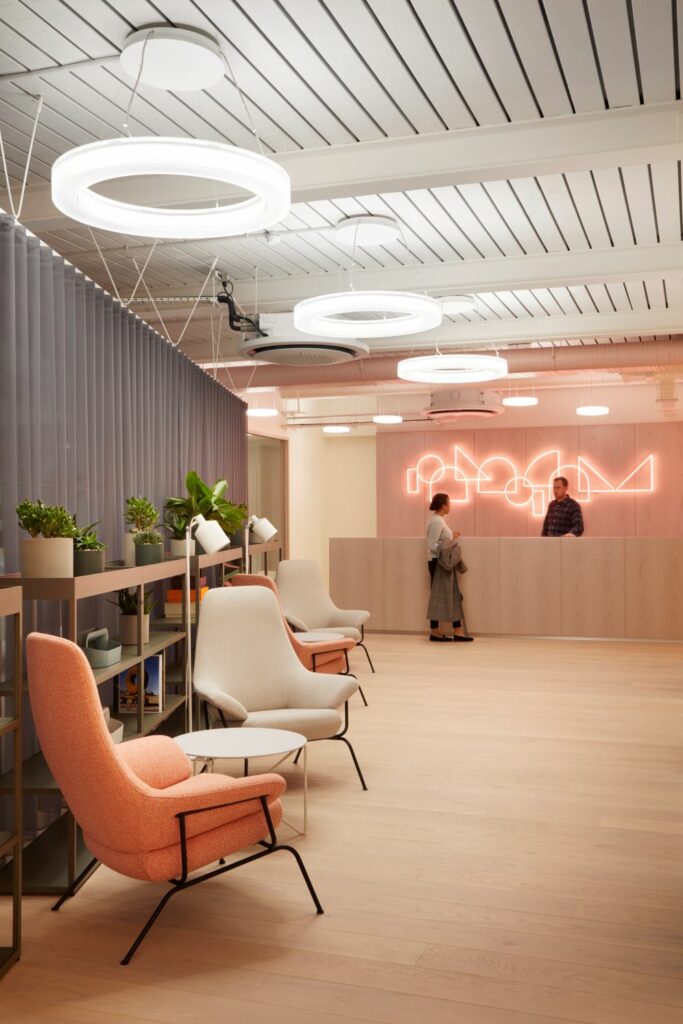
What to consider when specifying curtain tracks for commercial projects
When it comes to specifying curtain tracks, there are a host of things to consider. In this blog, we discuss this topic in greater depth by looking at fixing details and how this helps to determine what track should be specified on your project.
There are four different ways to fix curtain tracks:
- Recessed
- Surface mounted
- Suspended
- Face fixed
Recessed
A recessed curtain track tends to lend itself to projects where creating an aesthetically pleasing finish is of paramount importance, as the track sits flush with the ceiling.
However, recessed curtain tracks are only possible when you have a plasterboard ceiling, as a slot needs to be cut to allow for the profile. It’s important to take into account how many layers of plasterboard are available for recessed as this will determine what track is most suitable.
Due to fire regulations and acoustic requirements, commercial spaces usually require a double skin plasterboard. Where this is the case, the Silent Gliss 6870 or 6970 curtain track systems would be the recommended option, as the depth of the recess profile is the same as the thickness of the plasterboard. For a single skin of plasterboard, we would suggest the Silent Gliss 6243.
Furthermore, it’s crucial to ensure a timber pattress is above the recessed slot, in order to give a suitable fixing.
Surface mounted
If you’re looking to top fix and recessed is not possible, we’d recommend surface fixing the curtain track. Most tracks achieve this by using swivel brackets.
Though typically used on suspended ceilings, surface mounted can be used on any ceiling unless there are services to work around, like cable trays and air conditioning. In this case, you’ll have to suspend the curtain track, which will be explained in more detail shortly.
Similarly to recessed, a timber pattress is required to provide a suitable fixing for surface mounted curtain tracks.
Suspended
We’re seeing a growing trend towards more exposed ceilings within the commercial sector. In most instances this means curtain tracks have to be suspended, to avoid them clashing with services as previously mentioned.
There are two ways of achieving this fitting. Firstly, via a cubicle track system such as the Silent Gliss 6100M. It’s important that adequate hangers are allowed for, to ensure the track is stable when operating the curtains.
Alternatively, the track can be suspended via Unistrut. This provides more flexibility, as it gives you the option to use a motorised or cord operated system.
Face fixed
There could be some instances where you’ll need to face fix a curtain track. In this scenario, it’s important to consider the size of bracket, which will be dependent on the type of curtain heading you’re using.
For example, if you’re using a wave heading, the track will need to be a certain distance from the wall, as the datasheet for the Silent Gliss 6840 wave track shows here.
Conclusion
For any curtain track, consideration of the size and weight of the curtain is crucial, as this could then impact the size of track and glider.
The two different types of gliders are standard and rollers. We’d recommend roller gliders for larger curtains and if there are multiple bends in the track. If bends or gradual curves are required, it’s important that the track selected can achieve the desired radius.
In instances when a bespoke design is required, our technical team are able to create and design innovative solutions to meet your design intent. The slideshow below is a great example of this from our work at 88 Wood Street.
If you require any more information or would like to discuss curtain tracks for your project, contact us here and our expert team will assist you.














